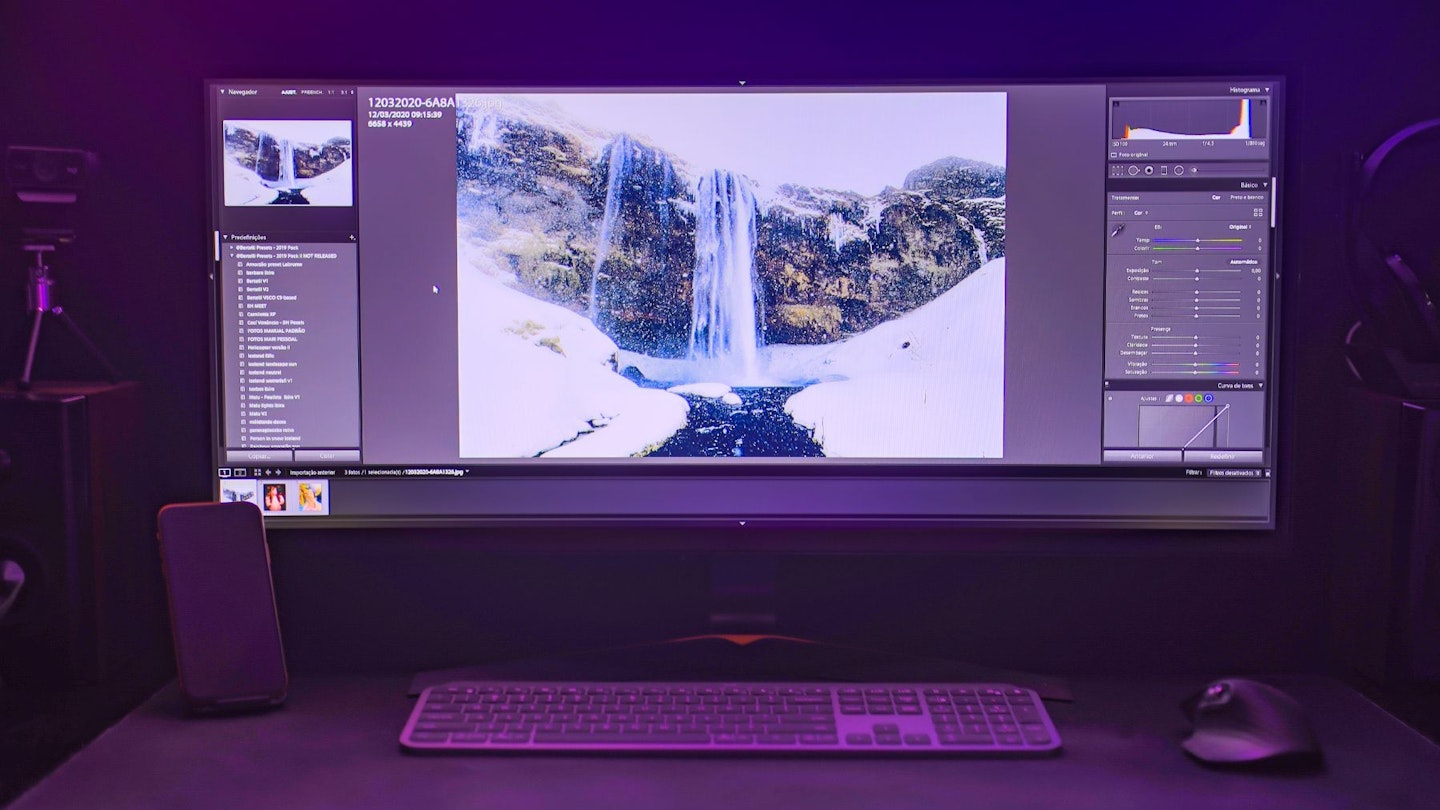You might have found yourself a great monitor, but the specs may still leave you a bit confused; more refresh rate is good, but what does it actually do in practice? And how important is it really? We're here to help answer that.
Refresh rate refers to how often your screen "refreshes" its image, which is how many times per second the screen updates. This is measured in hertz (Hz), so a 60Hz refresh rate means that the monitor updates 60 times per second, 120Hz is 120 times per second, and so on. By updating what's on screen at such a high rate, we experience a smoother sense of motion when looking at movement on a computer. It's similar to the frame rate on a TV.
Even if your monitor has a 4K resolution, it can still be held back by a mediocre refresh rate. What looks good still may appear staggered if you have a refresh rate lower than 50Hz. In general, the higher the refresh rate, the better, especially if you're looking for a monitor for PS5 or PC gaming.
That's a brief glance at the importance of refresh rates for monitors, but if you want to learn more, we're here to discuss it further in detail. Let's discuss how refresh rate factors into your experience with a monitor, the key specs to partner it with, and how much refresh rate you actually need.
Not just for gaming, but certainly handy for it
High refresh rates are fantastic for high-octane gaming situations. Whether it's a team-based game like Overwatch 2, a battle royale like Fortnite, or even a fighting game like Street Fighter 6, an enhanced refresh rate is really handy for discerning what's going on at every moment. In these game genres, every moment matters, so the rapid updating of your screen helps relay information to you faster and clearer.
However, it's not just relevant to gaming needs; the smooth motion works wonders for action movies and shows. To get the best out of your video-watching experience, don't underestimate the difference refresh rate can make. In most cases, you're almost always better off with a higher refresh rate and should only consider a lower one if you prefer a budget monitor.
The monitor refresh rate is only as good as the other specs
It should be clear now that refresh rate plays a major role in the screen performance of your monitor, but it's worth noting that it won't shine on its own. Just as a poor refresh rate can let down a 4K resolution, the reverse is true too.
Resolution refers to the number of pixels the screen displays, so it provides the level of detail you get out of the visuals. Likewise, you'll want proper colour support for a more vibrant image and a decent response time to update pixels to keep up with the refresh rate. So, rather than going for a 4K, 50Hz monitor or a 720p, 240Hz monitor, you would be better meeting in the middle with something like a 1440p, 144Hz monitor.
How many hertz do you need?
That's the importance of covering the monitor refresh rate, but how much do you actually need?
While 60Hz is far from impressive, it's by no means bad. For most shows, movies, and even casual games, 60Hz will cover you more than well enough. It's a serviceable level well-suited for casual use.
When looking to upgrade, 120Hz is an easy goal. With modern monitors, it's not too difficult to find an affordable 120Hz monitor, and at double the screen refreshes per second, it's undoubtedly impressive. Opt for this if you want to feel the most noticeable difference.
The next step is an interesting one: 144Hz. This is the ideal pick for those serious about their gaming setup. As you'll have a more powerful machine to run games, the CPU and GPU should manage a higher frame rate, which lines up nicer with 144Hz. Outside of gaming, it should be able to reach 120Hz more consistently than actual 120Hz monitors.
Lastly, we have 240Hz. While it's certainly a nice addition to have, it's far from necessary in most cases. At this speed, our eyes may struggle even to notice a difference in smooth motion, and it's usually quite an expensive step up for such a minor upgrade. That said, if you have a fine eye for detail, you'll appreciate the best when it comes to refresh rate.
Be aware of screen tearing
We compared the refresh rate to the frame rate earlier, and that similarity directly affected the issue known as screen tearing. This strange effect happens when your GPU and overall computer performance can produce more frames than the refresh rate can handle.
This appears as a "half-frame" appearing on your screen, and while it should only be there for a moment, it's very noticeable and will likely prove fairly distracting. As such, it's very important to factor in your expected frame rate when considering refresh rates.
Kyle Purves is a writer for What’s The Best, with an avid interest in all things gaming and tech.
They’re well-versed in reviewing a variety of tech products, with a soft spot for speakers and earphones. They’re also no stranger to hunting down the best savings, always wanting to get the best deal possible. Outside of work, they can often be found playing through an RPG, listening to Japanese noise rock, or trying to catch up with their ever-expanding list of shows and anime to watch. If possible, they try to play Dungeons and Dragons a couple of times a week, but getting six adults to be free at the same time is easier said than done.
Subscribe to the What’s The Best Newsletter to keep up to date with more of the latest reviews and recommendations from the rest of the What’s The Best team.
